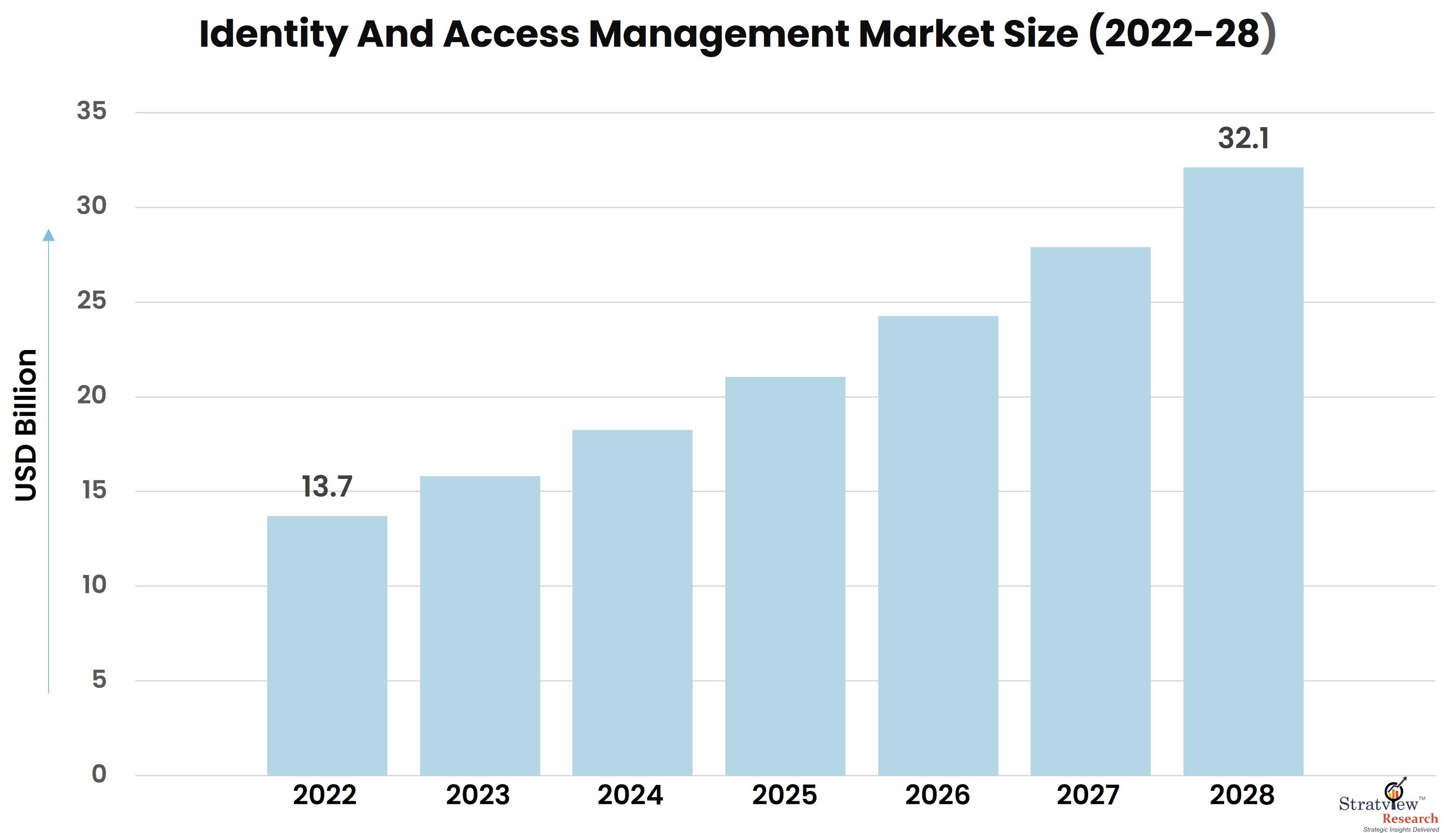According to Stratview Research, the identity and access management market was estimated at USD 13.7 billion in 2022 and is likely to grow at a CAGR of 15.2% during 2023-2028 to reach USD 32.1 billion in 2028.
In today's digital landscape, where cybersecurity threats loom large, organizations are increasingly turning to advanced solutions to safeguard their assets and data. Among these solutions, Identity and Access Management (IAM) stands out as a critical component in securing digital identities and controlling access to sensitive information. This article delves into the intricacies of the IAM market, exploring its significance, evolution, and the role it plays in fortifying cybersecurity defenses.
The Significance of Identity and Access Management: Identity and Access Management (IAM) is more than just a tool for managing user credentials; it's a cornerstone of modern cybersecurity strategies. At its core, IAM is about ensuring that the right individuals have access to the right resources at the right time and for the right reasons. By centralizing user authentication, authorization, and privileges, IAM solutions provide organizations with granular control over their digital identities and help mitigate the risks associated with unauthorized access and data breaches.
Evolution of the IAM Market: The IAM market has undergone significant evolution in recent years, driven by a confluence of factors, including the proliferation of cloud computing, the rise of remote work, and the increasing sophistication of cyber threats. Traditional IAM solutions, which were primarily on-premises and focused on employee access management, have given way to more comprehensive and adaptive solutions that cater to the diverse needs of modern organizations.
Today, IAM solutions encompass a wide range of functionalities, including single sign-on (SSO), multi-factor authentication (MFA), privileged access management (PAM), and identity governance and administration (IGA). Moreover, with the growing adoption of hybrid and multi-cloud environments, IAM vendors are innovating to provide seamless identity management across disparate IT ecosystems, ensuring consistent security policies and user experiences across the board.
Addressing Security Challenges: The IAM market is uniquely positioned to address the security challenges faced by organizations in an increasingly interconnected and dynamic digital environment. With the proliferation of digital identities—from employees and partners to customers and IoT devices—IAM solutions provide a unified framework for managing identities and enforcing access controls across the entire enterprise ecosystem.
Moreover, IAM solutions play a crucial role in compliance management, helping organizations meet regulatory requirements and industry standards related to data privacy and security. By implementing robust identity governance and access controls, organizations can demonstrate accountability and transparency in how they manage and protect sensitive information, thereby reducing the risk of regulatory penalties and reputational damage.
Future Trends and Opportunities: Looking ahead, the IAM market is poised for continued growth and innovation as organizations grapple with evolving cybersecurity threats and regulatory requirements. Emerging trends such as zero trust security, identity as a service (IDaaS), and artificial intelligence-driven authentication are reshaping the IAM landscape, offering new capabilities and opportunities for organizations to strengthen their security posture.
Furthermore, the proliferation of digital transformation initiatives, coupled with the increasing adoption of remote work and mobile devices, is driving demand for IAM solutions that are agile, scalable, and user-friendly. IAM vendors are responding by developing intuitive interfaces, expanding their integration capabilities, and leveraging cloud-native architectures to deliver seamless and frictionless identity experiences across all digital touchpoints.
Conclusion: In conclusion, the Identity and Access Management (IAM) market plays a pivotal role in unlocking security and enabling organizations to navigate the complex cybersecurity landscape with confidence. By investing in IAM solutions, organizations can not only protect their digital assets and data but also enhance operational efficiency, streamline compliance management, and build trust with customers and partners. As the IAM market continues to evolve and innovate, organizations must stay abreast of emerging trends and best practices to effectively safeguard their digital identities and maintain a competitive edge in an increasingly connected world.


